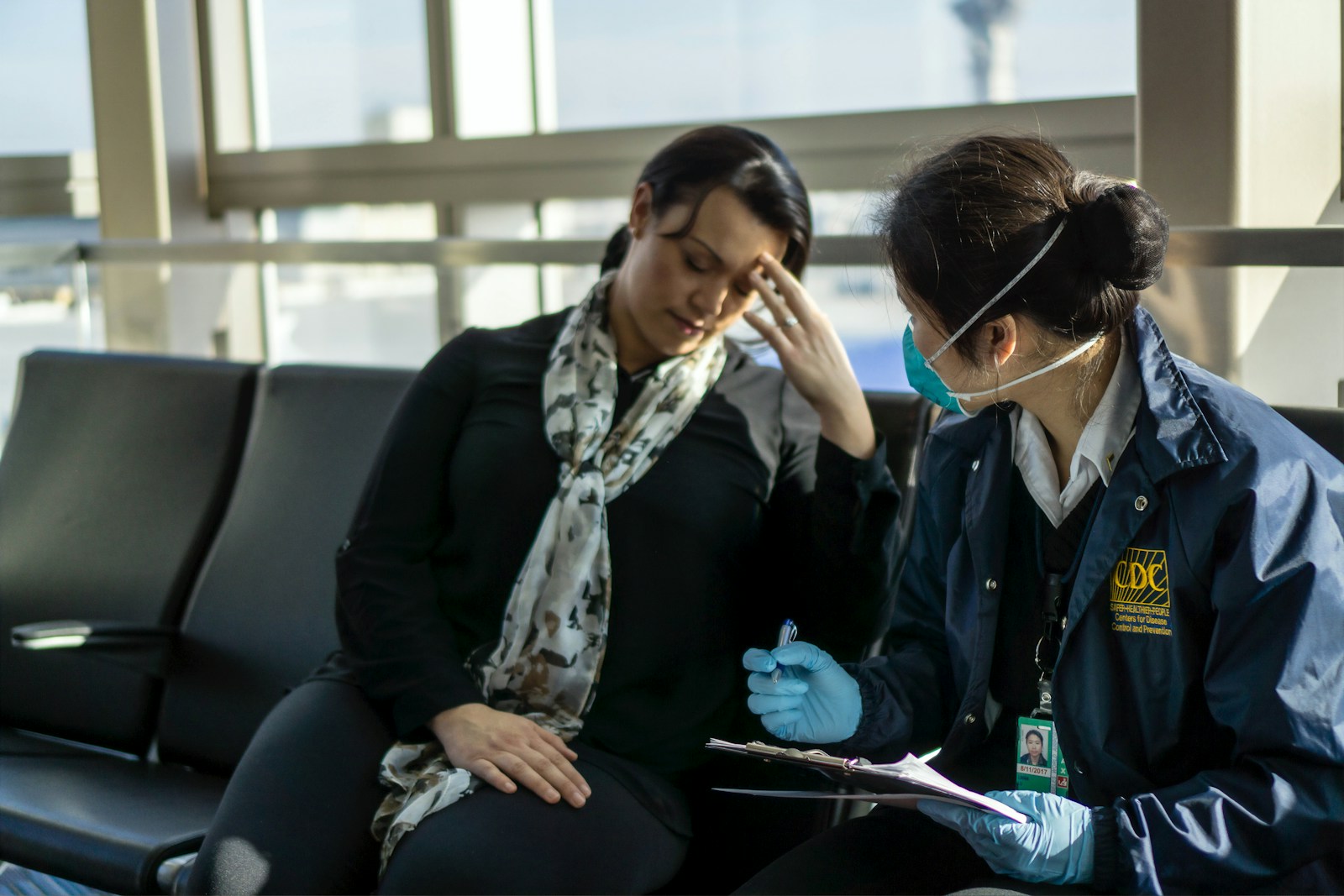
Postural Orthostatic Tachycardia Syndrome Types and Causes
Table of Contents
Postural Orthostatic Tachycardia Syndrome (POTS) is a blood circulation disorder characterized by two factors: a specific group of symptoms and a rapid increase in a heartbeat of more than 30 beats per minute, or a heart rate that exceeds 120 beats per minute, within 10 minutes of rising.
The primary symptom of POTS is lightheadedness or fainting, which is relieved by lying down again. POTS is a type of orthostatic intolerance, which means that it causes your heart to beat faster than normal when you transition from sitting or lying down to standing up.
The cause of POTS is unknown, but treatment is targeted at relieving low blood volume or regulating circulatory problems that may cause the disorder.
A number of drugs seem to be effective in the short term, but whether they help in the long term is uncertain. Simple interventions such as adding extra salt to the diet and attention to adequate fluid intake are often effective.
POTS symptoms vary from person to person and may include severe and/or long-lasting fatigue, lightheadedness with prolonged sitting or standing that can lead to fainting, and more.
Although the origin of POTS symptoms is physical, sometimes people attribute the symptoms incorrectly to psychological disorders such as anxiety. While some people with POTS have anxiety disorders similar to the general population, POTS is not caused by anxiety.
Aside from exercise and dietary changes, other things you can do to manage POTS include frequently monitoring your pulse and blood pressure and getting quality sleep.
Wearing compression garments may help some people reduce excessive blood pooling in the legs, and certain postures while sitting or sleeping may also help reduce POTS symptoms.
Unfortunately, there’s nothing you can do to prevent developing POTS, but there are steps you can take to try to prevent flare-ups by knowing what your triggers are.
Learning that you have POTS can be overwhelming, but there are several treatments and lifestyle adaptations that can help manage your symptoms. No two people with POTS are affected in the same way, so it’s important to receive individualized care that’s unique to your situation.
POTS syndrome triggers
Postural Orthostatic Tachycardia Syndrome (POTS) symptoms can be triggered by a variety of factors, including physical and emotional stressors. Here are some common triggers of POTS symptoms:
- Standing frequently, such as when you’re waiting in line or shopping
- Participating in strenuous exercise
- Being sick, such as from a cold or an infection
- Having your period (menstruation)
- Feeling hot
- Eating, especially refined carbohydrates like white bread
- Not drinking enough fluids
- Drinking alcohol
- Emotional stress
It’s important to note that triggers can vary from person to person, and some people may not have any identifiable triggers at all. Identifying your triggers can help you manage your symptoms and prevent flare-ups.
POTS disease life expectancy
According to the search results, Postural Orthostatic Tachycardia Syndrome (POTS) does not affect life expectancy. Although POTS can be debilitating and have a significant impact on daily life, most people with POTS can manage their symptoms with lifestyle changes, medications, and physical activity.
The prognosis for POTS is generally good, and most people with POTS experience an improvement in their quality of life with adjustments in diet, medications, and physical activity.
Is POTS an autoimmune disease
According to the search results, there is growing evidence suggesting that Postural Orthostatic Tachycardia Syndrome (POTS) may be an autoimmune disorder. However, a clear autoimmune etiology has not been identified, and the role of autoimmunity in POTS is still being studied.
Certain autoimmune conditions, such as Sjogren’s syndrome, lupus, and celiac disease, are associated with a higher risk of developing POTS. Antecedent infections, physical trauma, and surgery are also known to increase the risk of developing POTS.
While POTS can be debilitating and have a significant impact on daily life, it does not affect life expectancy. The prognosis for POTS is generally good, and most people with POTS experience an improvement in their quality of life with adjustments in diet, medications, and physical activity.
Is POTS genetic
According to the search results, Postural Orthostatic Tachycardia Syndrome (POTS) can have a genetic component, but there is no one specific gene mutation that causes POTS.
Rather, POTS is a syndrome that can have its genetic roots in various genes. Certain genetic variants increase susceptibility to POTS in different ways, including nitric oxide genes, norepinephrine transporters, and the beta2-adrenergic receptor.
There is also a strong association between POTS and various joint hypermobility disorders, including Ehlers-Danlos syndrome. However, the exact genetic basis of POTS is still being studied, and no single gene associated with the majority of cases of POTS has been identified.
How to test for POTS
There are several ways to test for Postural Orthostatic Tachycardia Syndrome (POTS), as described in the search results:
1. Tilt Table Test: This is the main way to diagnose POTS. In this test, the patient lies on a table that can be adjusted from horizontal to vertical. The patient’s heart rate and blood pressure are measured as they change position. If POTS is present, symptoms will likely appear during this phase of testing.
2. Active Stand Test: This test can be used to diagnose POTS. Under careful supervision, heart rate and blood pressure are measured after resting, lying down, then immediately upon standing and after 2, 5, and 10 minutes. This test may bring on symptoms of POTS, and some people may feel unwell or faint.
3. 10 Minute Stand Test: This test can be performed at home with minimal equipment. The patient stands up for 10 minutes, and their heart rate is measured. An increase in heart rate of 30 beats per minute within the 10-minute period that lasts longer than 1 minute may indicate POTS.
4. Other Tests: Other tests that may be performed to help confirm a POTS diagnosis or rule out other possible causes of symptoms include blood and urine tests, QSART (a test that measures the autonomic nerves that control sweating), heart rhythm testing, and more.
It’s important to note that POTS is diagnosed only when orthostatic hypotension is ruled out and when there is no acute dehydration or blood loss. A healthcare provider will ask questions about your symptoms, medications, and medical history, and perform a physical exam before ordering any tests.
Hyperadrenergic POTS
Hyperadrenergic POTS is a subtype of Postural Orthostatic Tachycardia Syndrome (POTS) that affects 30% to 60% of patients with POTS. In hyperadrenergic POTS, patients experience symptoms such as palpitations, abdominal pain, nausea, and hyperhidrosis, which are likely to be exaggerated upon physical exertion and emotional stress.
This is likely due to the elevated standing plasma norepinephrine levels in the hyperadrenergic state.Patients with hyperadrenergic POTS often complain of significant tremor, anxiety, and cold sweaty extremities while upright.
Hyperadrenergic POTS is associated with very high erect norepinephrine levels due to sympathetic overactivity. Other subtypes of POTS include neuropathic POTS, which is the most common subtype, and hypovolemic POTS, which is associated with reduced blood volume.
Hypovolemic POTS
Hypovolemic POTS is a subtype of Postural Orthostatic Tachycardia Syndrome (POTS) that is characterized by abnormally low levels of blood, including both red blood cells and plasma.
Hypovolemia can be seen in many POTS patients, and increasing fluid intake and salt supplements can significantly improve symptoms. Low blood volume can cause similar symptoms that may overlap in neuropathic and hyperadrenergic POTS.
Hypovolemic POTS is associated with a plasma volume deficit of approximately 13%, which typically causes only insignificant changes in heart rate and norepinephrine levels while a patient is supine.
However, blood pooling associated with upright posture further compromises cardiac output and consequently increases sympathetic nerve activity. Hypovolemic POTS is often treated with a combination of increased fluid and salt intake, medications such as fludrocortisone, and compression garments.
POTS symptoms checklist
Postural Orthostatic Tachycardia Syndrome (POTS) symptoms can vary from person to person, but some common symptoms include:
- Dizziness or lightheadedness, especially when standing up, during prolonged standing in one position or on long walks.
- Fainting or near fainting.
- Palpitations or racing heart rate.
- Difficulty thinking and concentrating (brain fog).
- Fatigue or exhaustion.
- Intolerance of exercise.
- Headaches or migraines.
- Blurry vision.
- Tremor.
- Nausea, bloating, diarrhea, constipation, and abdominal pain.
- Purple discoloration of hands and feet.
- Shortness of breath.
- Chest pain.
- Feeling nervous or anxious.
- Shakiness and excessive sweating.
- Hypersensitivity to light, sound, or skin.
- Orthostatic headaches.
It’s important to note that not everyone with POTS will experience all of these symptoms, and some may be more sporadic while others are constant. Symptoms may also get worse when you get a common cold or an infection, and they may change from day to day. If you suspect you have POTS, it’s important to talk to a healthcare provider who can perform a physical exam and order appropriate tests to confirm a diagnosis.
Types of POTS syndrome
Postural Orthostatic Tachycardia Syndrome (POTS) is classified into different types, as described in the search results:
1. Neuropathic POTS: This is the most common form of POTS, accounting for about 80% of cases. It is caused by damage to the small fiber nerves that supply the vessels in the lower limbs, which results in blood pooling in the lower extremities rather than being returned back up to the heart. Symptoms include dizziness, tachycardia, and loss of sweating in the extremities.
2. Hyperadrenergic POTS: This type of POTS is characterized by high levels of nor-epinephrine in the blood, which causes increased heart rate and blood pressure when standing. Patients with hyperadrenergic POTS often have palpitations, abdominal pain, nausea, and hyperhidrosis, which are likely to be exaggerated upon physical exertion and emotional stress.
3. Hypovolemic POTS: This type of POTS is characterized by abnormally low levels of blood, including both red blood cells and plasma. People with hypovolemic POTS have symptoms such as dizziness, tachycardia, and shortness of breath.
4. Secondary POTS: This type of POTS occurs when some other disease or mechanism, such as diabetes, lupus, chemotherapy, or alcoholism, damages the nerves that control the redistribution of blood in the lower limbs. Symptoms are similar to those of neuropathic POTS.
It’s important to note that there is a lot of overlap between these subtypes, and it’s possible for one person to identify with symptoms and take medications described for each type of POTS.
What causes hyperadrenergic POTS
The exact cause of hyperadrenergic POTS is not fully understood, but there are several mechanisms that have been proposed, as described in the search results:
1. Overactive Sympathetic Nervous System: Hyperadrenergic POTS occurs when the sympathetic nervous system is overactive, leading to high levels of norepinephrine in the blood. This can cause increased heart rate and blood pressure when standing, as well as symptoms such as palpitations, abdominal pain, nausea, and hyperhidrosis, which are likely to be exaggerated upon physical exertion and emotional stress.
2. Norepinephrine Transporter Deficiency: Some researchers suggest that an abnormality in a gene that leads to too much norepinephrine circulating in the body may be a mechanism for hyperadrenergic POTS.
3. Hypovolemia: Hypovolemia, or low blood volume, can also contribute to hyperadrenergic POTS. Reduced blood volume can lead to POTS, and between 30-60% of patients with POTS may have high levels of blood norepinephrine levels on standing and high or fluctuating blood pressure.
4. Other Factors: Hyperadrenergic POTS can occur as a result of both hypovolemia and neuropathic POTS. It can also be associated with gut problems such as diarrhea, feeling sick, and vomiting.
It’s important to note that the exact cause of POTS is still being studied, and there may be multiple causes that contribute to the development of the condition.
Postural orthostatic tachycardia syndrome supportive therapy
Supportive therapy for Postural Orthostatic Tachycardia Syndrome (POTS) focuses on decreasing symptomatic orthostatic hypotension (OH) and syncope. Here are some supportive therapies that can help manage POTS symptoms:
1. Physical counter maneuvers: These include compression garments, which can help reduce excessive blood pooling in the legs, and certain postures while sitting or sleeping that may help reduce POTS symptoms.
2. Dietary changes: Increasing salt and water intake can help manage POTS symptoms.
3. Exercise: An exercise reconditioning program, including both aerobic and resistance training, with an emphasis on non-upright exercises such as rowing machines, recumbent cycles, and swimming, can help manage POTS symptoms.
4. Medications: Many different medications are used to treat POTS, such as Fludrocortisone, Beta Blockers, Midodrine, Clonidine, Pyridostigmine, Benzodiazepines, SSRIs, SNRIs, and more. However, all of these medications have potential side effects, and whether they help in the long term is uncertain.
5. Raising the head of the bed: Raising the head of the bed six to 10 inches can help alleviate POTS symptoms.
6. Monitoring pulse and blood pressure: Frequently monitoring your pulse and blood pressure can help manage POTS symptoms.
7. Quality sleep: Getting quality sleep can help manage POTS symptoms.
It’s important to note that no two people with POTS are affected in the same way, so it’s important to receive individualized care that’s unique to your situation. Don’t be afraid to ask your healthcare provider questions about supportive therapies that can help manage your POTS symptoms.
Postural Orthostatic Tachycardia Syndrome (POTS) Treatment
The symptoms of POTS can be debilitating, and treatment usually focuses on managing symptoms rather than curing the condition. Treatments are tailored to individual needs, as POTS can vary greatly from person to person.
Here is a comprehensive overview of the most common POTS treatments:
1. Lifestyle Modifications
- Increased Fluid Intake: People with POTS are often advised to drink plenty of fluids (2-3 liters per day). Proper hydration helps to increase blood volume and prevent drops in blood pressure when standing.
- Increased Salt Intake: Increasing salt (sodium) intake, under medical supervision, helps retain fluid in the body and maintain blood pressure. Some individuals may be prescribed salt tablets.
- Compression Garments: Wearing compression stockings or abdominal binders can help reduce blood pooling in the legs and abdomen, improving circulation and preventing symptoms.
- Small, Frequent Meals: Large meals can exacerbate POTS symptoms, so smaller meals eaten more frequently can help prevent post-meal dizziness and fatigue.
- Physical Activity: A carefully structured exercise program focusing on low-intensity, non-upright exercises (like swimming, rowing, or recumbent cycling) is often recommended. Over time, the exercise plan can be increased to include more upright activities.
2. Pharmacological Treatments
Several medications may be used to manage the symptoms of POTS:
- Beta Blockers: These medications, such as propranolol or metoprolol, help reduce heart rate. They are particularly useful for patients with a very high resting heart rate.
- Fludrocortisone: This is a corticosteroid that helps the body retain salt and water, increasing blood volume and helping prevent low blood pressure.
- Midodrine: A vasoconstrictor that raises blood pressure by narrowing blood vessels, reducing dizziness and fainting when standing.
- Ivabradine: This drug selectively reduces heart rate without affecting blood pressure, making it effective in POTS patients with excessive heart rate increases.
- Pyridostigmine: This medication improves the function of the autonomic nervous system by increasing acetylcholine levels, which can help regulate heart rate and blood pressure.
- Selective Serotonin Reuptake Inhibitors (SSRIs): In some cases, SSRIs or serotonin-norepinephrine reuptake inhibitors (SNRIs) are prescribed to manage POTS-related anxiety, fatigue, or depression.
3. Dietary Adjustments
- Increase Salt and Electrolytes: Sodium supplements, electrolyte-rich beverages, and salty snacks can help prevent dehydration and promote fluid retention.
- Avoid Caffeine and Alcohol: Both can exacerbate POTS symptoms by causing dehydration or affecting blood pressure.
- Balanced Diet: A diet rich in vegetables, whole grains, lean proteins, and healthy fats supports overall health, while limiting refined sugars and processed foods can help regulate energy levels.
4. Physical Therapy
- Rehabilitation Program: A specially designed physical therapy program tailored to the needs of POTS patients can be beneficial. Initially, exercises are done in a reclined or semi-reclined position to avoid triggering symptoms, gradually progressing to more upright exercises as tolerated.
- Graded Exercise Therapy (GET): Over time, physical activity can be gradually increased to improve cardiovascular conditioning and tolerance to standing. A slow and careful progression is key to avoid symptom flare-ups.
5. Autonomic Nervous System Retraining
- Tilt Training: This method involves slowly and progressively increasing the time spent standing or in a tilted upright position to help the body adapt to the postural changes that trigger POTS symptoms. This is often done under supervision to avoid exacerbating symptoms.
6. Sleep Hygiene and Stress Management
- Improving Sleep: Many people with POTS struggle with sleep disturbances. Improving sleep hygiene, such as maintaining a consistent sleep schedule, avoiding screens before bed, and creating a calming sleep environment, can reduce fatigue.
- Stress Reduction: Stress management techniques such as mindfulness meditation, deep breathing exercises, or yoga can help alleviate anxiety, which often worsens POTS symptoms. Managing emotional stress is critical as it can trigger or intensify symptoms in many patients.
7. IV Fluid Therapy
In some severe cases of POTS, intravenous saline infusions may be used to rapidly increase blood volume and reduce symptoms, especially in individuals who struggle to maintain adequate hydration orally. This is not typically a long-term solution but can provide temporary relief.
8. Specialized Care
POTS can be a complex condition to manage, requiring the input of several specialists:
- Cardiologists: Specialize in managing heart rate and blood pressure issues, as well as prescribing medications to control tachycardia.
- Neurologists: Help manage the autonomic nervous system dysfunction seen in POTS, particularly when it’s related to other neurological conditions.
- Dietitians: Provide personalized advice on increasing salt and fluid intake safely, as well as managing any food intolerances or digestive symptoms common in POTS patients.
- Physical Therapists: Can design individualized exercise plans that take into account the unique challenges POTS patients face.
9. Addressing Co-Morbid Conditions
POTS is often associated with other conditions like Ehlers-Danlos syndrome (EDS), mast cell activation syndrome (MCAS), and autoimmune disorders. Treatment plans must often be adjusted to accommodate these conditions:
- Ehlers-Danlos Syndrome: If a patient has hypermobility or joint issues from EDS, physical therapy may need to be more carefully tailored to avoid injury.
- MCAS: In patients with MCAS, antihistamines and mast cell stabilizers may be added to the treatment regimen to address allergic-like symptoms such as flushing, gastrointestinal problems, and dizziness.
- Autoimmune Diseases: Autoimmune causes of POTS are treated by addressing the underlying autoimmune disorder, often using immunosuppressive therapies.
10. Monitoring and Regular Follow-Up
Since POTS symptoms can vary and change over time, regular follow-ups with healthcare providers are essential to adjust treatment as needed. Medications may need to be titrated, and lifestyle adjustments may be refined based on how symptoms evolve.
Conclusion
While there is no one-size-fits-all treatment for Postural Orthostatic Tachycardia Syndrome, a combination of lifestyle changes, medications, physical therapy, and specialist care can help manage symptoms and improve quality of life.
Managing POTS requires a comprehensive approach, with the patient actively involved in monitoring their symptoms and working closely with healthcare professionals. Although POTS can be a chronic condition, many individuals find that with the right management plan, their symptoms can be significantly improved.
Continue reading: 10 Best Antioxidant Foods and Why


